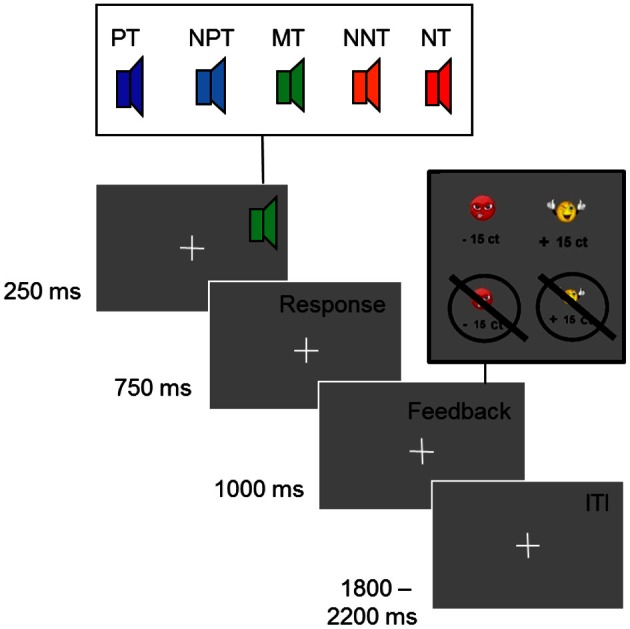Figure 1.

Ambiguous cue-conditioning paradigm. PT, positive tone; NPT, near-positive tone; MT, middle tone; NNT, near-negative tone; NT, negative tone. Participants were instructed to press a button after each tone to obtain reward or avoid loss of reward (0.15 €). After the button press participants received a feedback. In case of a correct identification of the positive tone, they saw a smiley indicating a monetary gain. For a wrong button press or no response, they saw a crossed smiley indicating that they had missed the chance to earn money. A correct identification of the negative tone was followed by a picture of a crossed frowney indicating that they had successfully avoided loosing money; for a wrong button press, participants lost money and saw a frowney. No feedback was presented after intermediate tones (NPT, MT, NNT) and after 4% of the reference tones (PT, NT). The inter-trial-interval (ITI) was jittered between 1800 and 2200 ms.
